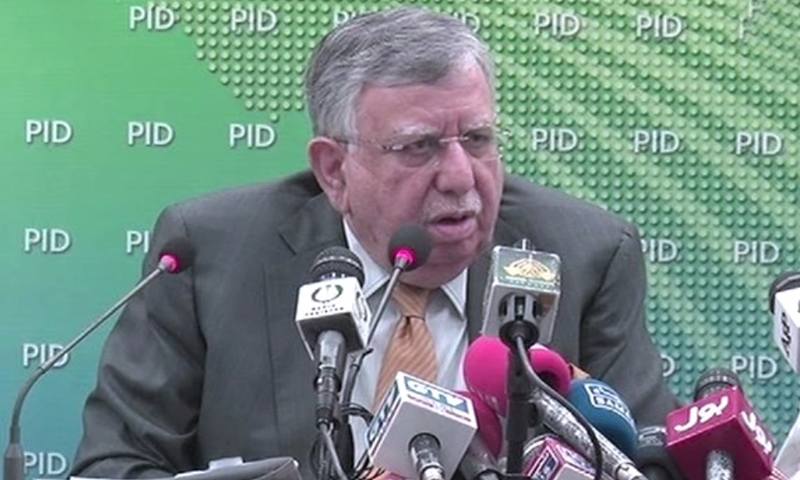By Khaleeq Kiani
Published in DAWN on October 29, 2021
ISLAMABAD: Recording fiscal deficit during the first two months of the current fiscal year unchanged at 0.9 per cent of GDP, the finance ministry on Thursday warned that the exchange rate, commodity supplies and seasonality could intensify the magnitude of prices and transportation costs in the country.
“The effect of these impulses — surge in international oil prices, exchange rate depreciation and adjustments in administered prices — may intensify the magnitude of prices and transportation cost,” Economic Adviser’s Wing of the Ministry of Finance stated in its monthly Economic Update & Outlook.
The ministry said the country had seen the revival of economic activities but an unprecedented increase in international commodity prices was putting pressure on domestic prices as well as on the local currency. The government’s pro-growth initiative along with efficient monitoring of prices is expected to provide relief to the general public.
The ministry explained that the country’s inflation rate was mainly driven by monetary and supply side factors, including domestic and international commodity prices, dollar exchange rate, seasonal factors and economic agents’ expectations concerning the future developments of these indicators.
Says effect of international oil price hike, exchange rate depreciation may intensify magnitude of prices, transportation cost
Since May this year, year-on-year inflation has observed a downward trend till September but has seen recent surge in international oil prices, exchange rate depreciation and adjustments in administered prices.
The ministry said the government’s efforts to ensure smooth supply of essential commodities to domestic food markets to protect the livelihood of people could be helpful, and if there would be no additional impulses in October, then year-on-year inflation might decelerate.
All in all, the central forecast for October and beyond shows resumption of downward trend in year-on-year inflation, but within a broad uncertainty range. “The inflation rate in October is expected to settle below the level observed in September, but the probability range is wide,” it said.
The ministry’s report said preliminary production estimates of major Kharif crops for 2021 were encouraging as reviewed at a recent meeting of the Federal Committee on Agriculture. The inputs availability will remain satisfactory as more certified seeds for wheat and other crops will be ensured for the upcoming Rabi 2021-22 season and hence it is expected that in the absence of any adverse climate shock, the agriculture sector will surpass its target of 3.5pc.
Industrial activity measured by the large-scale manufacturing (LSM) index was most exposed to external conditions. The LSM cycle is following the cyclical recovery in the main trading partners, but since it is focused on the main industrial sectors and not on total GDP, it is somewhat more volatile than the cyclical component of GDP in Pakistan’s main export markets.
The report said the government had absorbed the pressure of increasing international rates and provided “maximum relief” to consumers by keeping petroleum levy and sales tax to a minimum level and would provide targeted subsidies on wheat, sugar and pulses to 40pc of the population for which the government had compiled a database to identify the targeted population.
According to the report, fiscal deficit in July-August FY22 was recorded at 0.9pc of GDP, the same as in the comparable period last year. In absolute terms, it stood at Rs462 billion against Rs415bn in July-August FY21. During the first two months of FY22, the primary balance showed a deficit of Rs37bn, compared to a surplus of Rs69bn in the comparable period last year.
Net revenue receipts increased by 7.1pc to Rs470bn in July-August FY22 compared to Rs439bn last year. A rise in FBR tax collection during the period contributed significantly to the increase in revenue receipts. The PSDP (Public Sector Development Programme) spending jumped by 18.9pc to Rs63bn in the first two months of the current fiscal year compared to Rs53bn during the same period last year.




